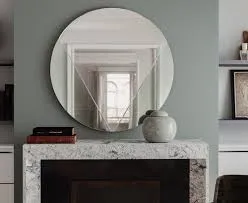

The Rising Trend of Low-E Glass Manufacturers A Sustainable Solution for Modern Construction
In the face of growing concerns about energy efficiency and sustainability, low-emissivity (low-E) glass has emerged as a pivotal innovation in the construction industry. As building codes tighten and the demand for eco-friendly materials increases, low-E glass manufacturers are playing a crucial role in providing sustainable solutions that help both the environment and consumers. This article explores the importance of low-E glass, the role of manufacturers in its production, and the implications for the future of construction.
Understanding Low-E Glass
Low-E glass is a type of energy-efficient glazing that minimizes the amount of ultraviolet and infrared light that can pass through it without compromising the amount of visible light that is transmitted. This technology involves the application of a thin metallic coating on the glass surface, which reflects heat back into the building during the winter and deflects outside heat during the summer, thereby maintaining a stable indoor temperature. As a result, buildings consume less energy for heating and cooling, leading to significant reduction in energy costs and greenhouse gas emissions.
The Role of Low-E Glass Manufacturers
Low-E glass manufacturers are at the forefront of this technological advancement. They not only produce the glass itself but also engage in research and development to innovate the properties and applications of low-E technology. By investing in advanced production techniques and materials, these manufacturers are expanding the capabilities of low-E glass, making it suitable for various architectural styles and structures.
Furthermore, these manufacturers ensure that low-E glass can be integrated seamlessly into different types of frames and windows, which is vital for construction projects. This integration is essential for optimizing energy efficiency across various climates and building designs. The collaboration between manufacturers and architects is becoming increasingly important as the demand for customized solutions grows.
Economic and Environmental Benefits

The economic implications of low-E glass are substantial. By improving energy efficiency, buildings equipped with low-E glass can significantly lower operational costs, thereby increasing property value. Furthermore, as energy prices fluctuate, the financial benefits of incorporating low-E glass become even more pronounced. This cost-effectiveness is a major selling point for builders and developers looking to appeal to environmentally-conscious consumers.
From an environmental perspective, the reduction of energy consumption translates to lower carbon emissions. In a world grappling with climate change, the role of low-E glass in sustainable construction practices cannot be overstated. It aligns with global initiatives aimed at reducing energy use in residential and commercial buildings, ultimately contributing to a greener future.
Challenges in the Industry
Despite the advantages of low-E glass, manufacturers face challenges that need to be addressed. The production process can be costly, and there is often a knowledge gap among builders and consumers regarding the benefits and functionality of low-E glass. Educational initiatives aimed at increasing awareness and understanding of this technology are crucial for driving adoption.
Additionally, as demand grows, manufacturers are tasked with ensuring that production meets environmental standards while maintaining cost-efficiency. Continuous innovation in production techniques is necessary to enhance performance and reduce costs, thus making low-E glass more accessible to a wider range of consumers.
Looking Ahead The Future of Low-E Glass Manufacturing
As building codes and regulations continue to evolve towards greater energy efficiency, low-E glass manufacturers are poised for growth. The increasing focus on sustainability in architecture and construction is likely to drive further innovations in low-E technology. Manufacturers who keep pace with trends, embrace advanced technologies, and prioritize environmental stewardship will be well-positioned in the market.
In conclusion, low-E glass manufacturers are playing a vital role in shaping the future of sustainable construction. By producing innovative products that enhance energy efficiency while reducing environmental impact, they are contributing to a more sustainable future. As awareness of the benefits of low-E glass grows and technology continues to advance, it is clear that these manufacturers will remain at the forefront of the construction industry’s transition towards energy-efficient solutions.